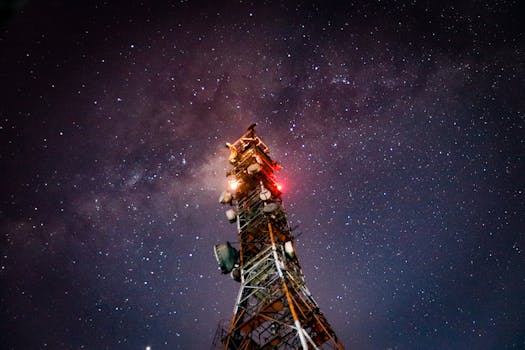Starlink: Revolutionizing Global Internet Connectivity with SpaceX’s Satellite Constellation

Starlink: Revolutionizing Global Internet Connectivity with SpaceX’s Satellite Constellation
Starlink is a satellite constellation developed by SpaceX to provide high-speed, low-latency internet connectivity across the globe, bridging the digital divide and transforming the way we communicate. With its cutting-edge technology and ambitious goals, Starlink is poised to revolutionize the way we access the internet, making it faster, more reliable, and more accessible to people around the world.
Introduction to Starlink
Starlink is a constellation of low-Earth orbit (LEO) satellites designed to provide broadband internet services to remote and underserved communities. The project was announced by Elon Musk, the CEO of SpaceX, in 2015, with the goal of creating a network of satellites that could provide high-speed internet connectivity to the entire world. Since then, SpaceX has launched numerous satellites as part of the Starlink constellation, with plans to deploy thousands more in the coming years.
How Starlink Works
Starlink uses a constellation of LEO satellites to provide internet connectivity. The satellites are equipped with advanced transceivers that allow them to communicate with user terminals on the ground, which are small, dish-like antennas that can be installed at homes, schools, or other locations. The user terminals communicate with the satellites, which then relay the data to a network of ground stations, where it is transmitted to the internet. The satellites are also equipped with inter-satellite links, which allow them to communicate with each other, enabling the creation of a mesh network that can provide seamless and uninterrupted internet connectivity.
Benefits of Starlink
Starlink has the potential to revolutionize the way we access the internet, providing numerous benefits to individuals, communities, and businesses. Some of the key benefits of Starlink include: faster internet speeds, with download speeds of up to 1 Gbps and latency as low as 20 ms; global coverage, with the ability to provide internet connectivity to remote and underserved communities; low cost, with the potential to reduce the cost of internet access and make it more affordable for people around the world; and increased reliability, with the ability to provide uninterrupted internet connectivity even in areas with limited or no infrastructure.
Challenges and Controversies
While Starlink has the potential to revolutionize the way we access the internet, it is not without its challenges and controversies. Some of the key concerns include: space debris, with the potential for the satellites to contribute to the growing problem of space debris in Earth’s orbit; interference, with the potential for the satellites to interfere with other satellite systems and ground-based communications; and regulatory issues, with the need for SpaceX to navigate complex regulatory frameworks and obtain approvals from governments around the world.
